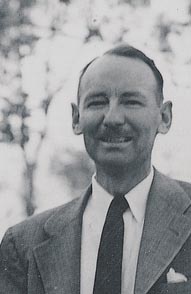Next stop in his art education was near Paris, where he studied at the American Academy of Art at Fountainbleau, followed by a time in Paris where he studied lithographic techniques. While in Europe, he traveled extensively, seeing the cities and countryside of Western Europe and North Africa.When the Great Depression hit, Dike corresponded with Mrs. Nelbert Chouinard in Los Angeles, who offered Dike a teaching position which he held for the next twenty years.
Happy to have a paying job in bad times, Phil Dike returned to California. During the depression, American art severed ties with European influences, and regional groupings of artists produced new and wholly American work. This activity was in part encouraged and financed by the government's new WPA project. Having been in other parts of the nation, Phil knew that the depression didn't hit California particularly hard, and rather than painting the depression's pain, he painted more positive scenes; children playing in parks, fishermen working their boats, and and sights in nearby Arizona, New Mexico, and Sonora.
Dike's achieved success as an artist early on, and was involved with the California Water Color Society, which included Millard Sheets, Lee Blair, Hardie Gramatky, Ralph Hulett, Emil Kosa, Phil Paradise, Milford Zornes, Paul Sample, and Barse Miller. The members of the society captured California light and color. Transparent watercolor paint was their favored medium.
Between 1927 and 1955, Phil Dike exhibited his works more than any other California Water Color Society member. His work won many awards. At this time, California gave birth to another art form: full color animated cartoons. One company managed to corner exclusive rights to having animated color film developed, and that company was lead by Walt Disney.
Disney gained fame and with it, huge expectations to produce top quality films. He hired top artists from across the country such as recent Chicago Art Institute graduate Joshua Meador. In 1935, Disney also hired Phil Dike to teach advanced drawing and composition to Disney Studio artists. Dike did work on some Disney films including Snow White and Fantasia. He said of artists working for Disney, "One of the greatest things Disney has to offer an artist is the discipline of having to sell his stuff by making definite and difficult statements, in simple and uncomplicated language, pictorially speaking."
Today, Phil Dike's work is in many museums, most notably, the Los Angeles County Museum of Art and the Metropolitan Museum of Art in New York.
Sources: Janice Lavoos and Gordon T. McClelland, Phil Dike, 1988; Edan Milton Hughes, Artists in California 1786 - 1940, 3rd ed., 2002.



